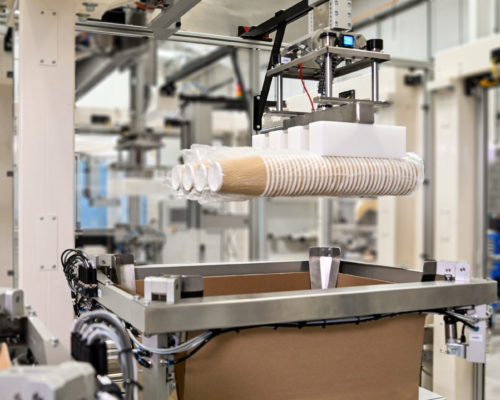Alleviating industry anxiety: What is the role of automation in a post-Covid world?
As the industry continues to adapt to the challenges of COVID-19, could the ‘new normal’ facing manufacturers be the catalyst needed to accelerate the shift towards automated manufacturing operations?

It has been a year like no other. The term ‘unprecedented’ has been overused in recent months but manufacturers have faced challenges like never before. Enforced shutdowns, social distancing, supplier shortages, increased employee absence and reduced demand have all impacted operations for the majority of companies.
Now, with production lines open again, the focus turns to maximising productivity whilst adhering to new measures. How can manufacturers streamline processes and improve accuracy as restrictions begin to ease, without risking the health and safety of employees? For many, the answer will lie in accelerating the shift towards the automation of manufacturing processes.
Building on strong foundations
Automation, of course, is nothing new in forward-thinking manufacturing sectors.
The fourth industrial revolution was already well under way before the pandemic, with the whole concept of Industry 4.0 first coined way back in 2010. Digitised factories across the world are already taking advantage of inventive technologies, reaping the rewards of connected plants, artificial intelligence, augmented reality, and advanced analytics.
However, despite the rapid progress in recent years, very few organisations worldwide have fully scaled the potential of automation.
With proven, mature innovation widely available (and often still underused), there is a common consensus that COVID-19 could be the catalyst to further accelerate adoption of automated processes on a mass scale.
Realising the benefits of automation
There are two core reasons why manufacturing system automation offers such potential in the post-COVID world.
The first is the operational impact, especially at a time when manufacturers are facing financial pressures and desperately seeking competitive advantage.
Introducing intelligent robotics to manufacturing processes can increase productivity, reduce downtime, and improve accuracy. To give just one example, we invented a high-speed lidding system for plastic and tin containers which has resulted in a much-improved production process for one of the world’s largest confectionery manufacturers, accommodating 50 parts per minute with fast, tool-free changeovers. These are the kind of efficiencies which will become ever more important as manufacturers seek to optimise productivity and maximise revenues.
Automation can also increase product traceability through serialisation systems. Applying unique identifier codes to products which enable more efficient track and tracing of products throughout the supply chain is arguably more important than ever in the post-COVID era.
Many commentators have already noted that those manufacturers with an element of automation in their industrial processes fared better during the pandemic outbreak. A greater flexibility of manufacturing processes and enhanced analytics have contributed to improved performance when compared with manual processes, and will continue to do so as firms move forward with gradually fewer restrictions.
Protecting people
The second core reason – and perhaps more significant in the current climate – is the human impact.
Notably, lean manufacturing and social distancing go hand-in-hand because sophisticated machines can not only do things quicker and more accurately than humans, they can also reduce or remove the need for human operation and contact.
Whilst social distancing remains in place, any opportunity to remove elements of human contact remains a positive one. This is especially true in manufacturing facilities with unique conditions such as chilled food facilities, where we have already seen the increased risk of transmission demonstrated by a series of high-profile outbreaks.
Automation of processes therefore can reduce human risk, ensure business continuity, and protect employee wellbeing. However, introducing robotics to the facility does not just mean fewer operatives working in close proximity on the floor. Smart factories and enhanced analytics also enable greater visibility and better data analysis – all from the safety of a remote device and, in many cases, without even needing to visit the plant itself.
This, in turn, can also create opportunities to upskill staff in other disciplines such as planning, data analysis and problem-solving. Nearly 70 per cent of workers believe automation will bring opportunities to qualify for higher skilled work, according to the International Federation of Robotics.
A collaborative approach
Of course, the solution is not to go and buy blind in the hope of making instant improvements. For any automation solution to be efficient, it must meet the individual needs of the manufacturer. That’s why we work closely with clients to understand requirements and provide a turnkey solution, applying a collaborative thought process with thorough testing and analysis throughout the implementation period.
We understand the challenges of investing in this post-COVID era, which is why it is more important than ever to make the right decisions. However, we have seen the opportunities that a good investment can create. Close collaboration can be the difference between an expensive failure and a successful investment.
Sewtec Automation is a leading robotics and automation company which invents, designs, manufactures, installs, and commissions complex factory automation systems for global blue-chip clients in the pharmaceutical, personal care, pet care, food and beverage, and tobacco industries. For more information on our turnkey solutions service, contact us today.


